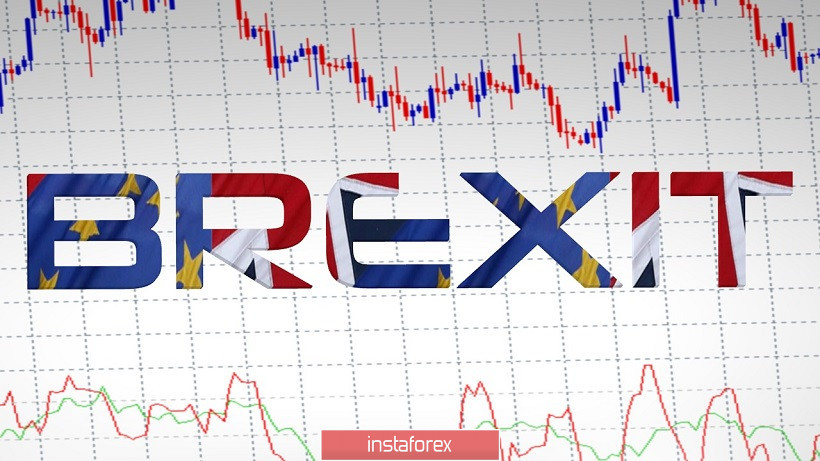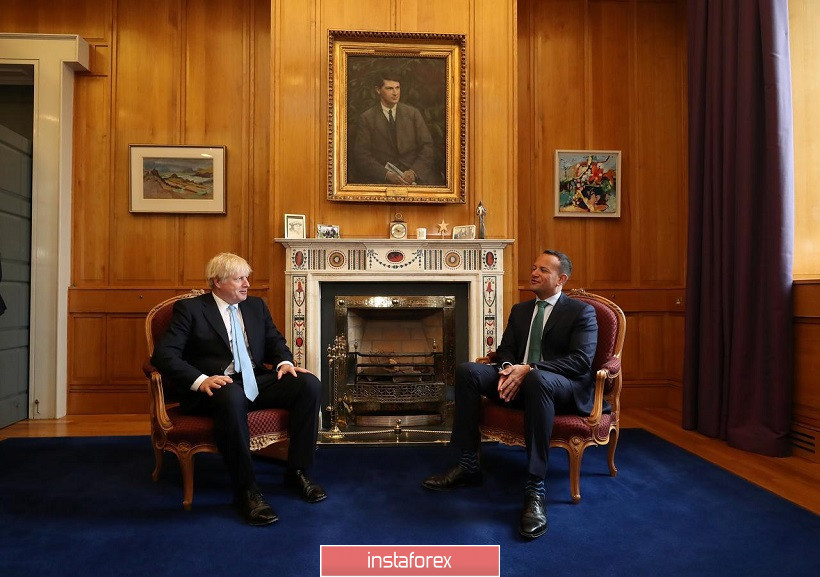The pound paired with the dollar jumped more than 250 points yesterday - this is the highest intraday growth over the past seven months. Even without opening the information feed, it was possible to draw an unmistakable conclusion that such a take-off was due to the Brexit question: macroeconomic reports - even the most important ones - now practically do not affect the dynamics of the British currency. For example, yesterday the GBP/USD pair updated an almost 3-week high amid disappointing data on the growth of the British economy and industrial production. This suggests that the pound is slightly susceptible to any forecasts, both long-term and short-term. Nevertheless, there are certain patterns in the behavior of the pound, even in conditions of "emotional instability".

In just a week, the EU summit will take place, at which once again the fate of Brexit will be decided. In anticipation of this event, the degree of incandescence rises, and any news regarding the prospects of the "divorce proceedings" throws the pound from side to side. So, literally at the beginning of this week, the GBP/USD pair fell from the middle of the 23rd figure to the bottom of the 22nd, on the news that Angela Merkel actually put an end to the negotiations. Although in this case the market was dealing with unofficial information, the pound slumped, having lost over 150 points in a few days.
Reasons for pessimism were: according to an insider, the German Chancellor criticized Johnson's latest proposals regarding the Irish border, saying that the deal is "unlikely" to be concluded on such terms. Merkel's position was consistent with the official comments of many European politicians, including among the EU leadership (with the exception of Juncker, who remains optimistic on this issue). Therefore, GBP/USD buyers again lost their hands: they could only hope for a prolonged negotiation process, with subsequent elections to the British Parliament, where hawkish conservatives could only strengthen their positions, thereby tightening relations with Brussels. Such prospects put significant pressure on the pound, and only the weakness of the US currency kept the GBP/USD pair within the 22nd figure - otherwise the price would have been in the region of annual lows.
Amid such "hopeless pessimism", yesterday's statement by Irish Prime Minister Leo Varadkar made a deafening effect. After all, it was just recently that he was among the first to criticize the latest proposals of Boris Johnson on the creation of a "translucent" border with the simultaneous granting of a veto to the legislative body of Northern Ireland. The head of the European Council, Donald Tusk, supported Varadkar, saying that the European Union would defend a solidarity position with Dublin. In other words, it was the prime minister of the Republic of Ireland who became the main opponent of the new proposals of the British prime minister, after which his position was supported in Brussels.
Now the situation has turned around 180 degrees.
Following the results of yesterday's dialogue with Boris Johnson, Leo Varadkar announced that their meeting was "promising and extremely positive." Such diplomatic curtsies are formal in nature, and therefore have been ignored by the market. But further Irish rhetoric forced traders to reconsider their positions on the pound. He said that given Johnson's "updated proposals," the deal could be concluded as early as the next few weeks, that is, until October 31. Unfortunately, Varadkar did not specify what kind of proposals are in question. He vaguely commented enough on the outcome of their conversation: "what happened today at the meeting will become the basis for new negotiations in Brussels." However, what exactly "happened" at their meeting remained a mystery. The only thing the Irish prime minister mentioned was some "customs issues", concessions on which should be discussed in a more expanded format. He also said that at the moment all the negotiators are willing to conclude a deal in the framework of the upcoming summit.
Thus, Leo Varadkar voiced truly optimistic theses, but without any details. It is worth recalling that over the past three years, such situations have repeatedly emerged when representatives of one of the sides of the triangle "EU - British Government - British Parliament" came up with compromise proposals. However, at the stage of coordination with other participants in the negotiation process, the initial optimism faded, as the parties could not crystallize the consolidated position.

In this case, it is difficult to talk about the prospects for the development of the situation, due to the lack of information. After all, we don't know what exactly Johnson proposed to Varadkar and how exactly Brussels and the British Parliament will respond to these proposals. Let me remind you that Theresa May once agreed on a draft deal with the EU, but was never able to convince MPs to ratify the agreement. Whether Johnson will repeat May's fate in this regard is an open question.
I believe that in the near future we will learn from official or unofficial sources what exactly was discussed at the meeting of the prime ministers. And depending on the reaction of the deputies and EU leaders, the pound will determine the vector of its movement. If the option of concluding a deal really appears on the horizon (even with a forced extension of the negotiation process until January 2020), the pound will strengthen by several more figures. Otherwise, the GBP/USD pair will return to the area of 21-22 figures with possible tests of the area of annual lows.
 English
English 
 Русский
Русский Bahasa Indonesia
Bahasa Indonesia Bahasa Malay
Bahasa Malay ไทย
ไทย Español
Español Deutsch
Deutsch Български
Български Français
Français Tiếng Việt
Tiếng Việt 中文
中文 বাংলা
বাংলা हिन्दी
हिन्दी Čeština
Čeština Українська
Українська Română
Română

